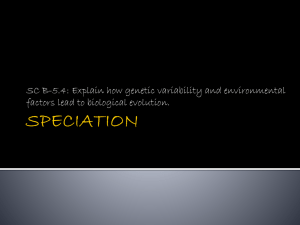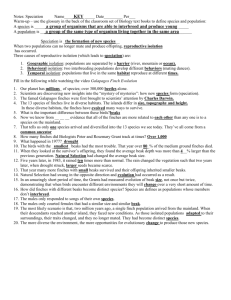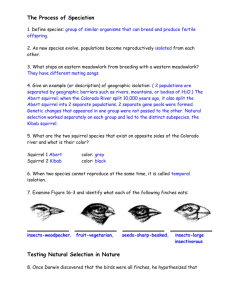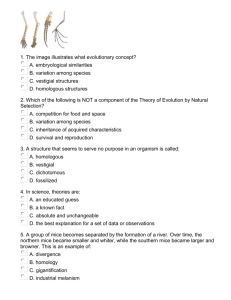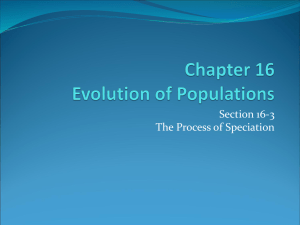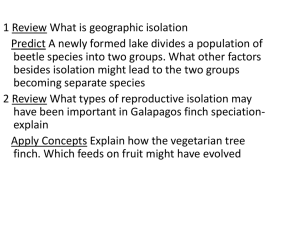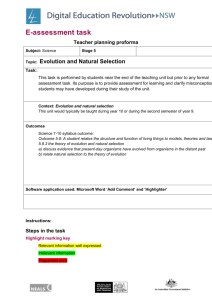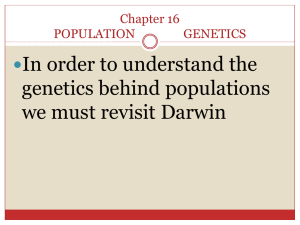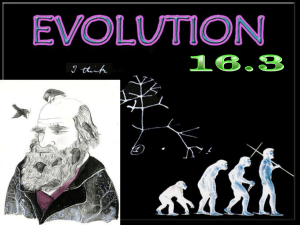The Process of Speciation (Chapter 16
advertisement
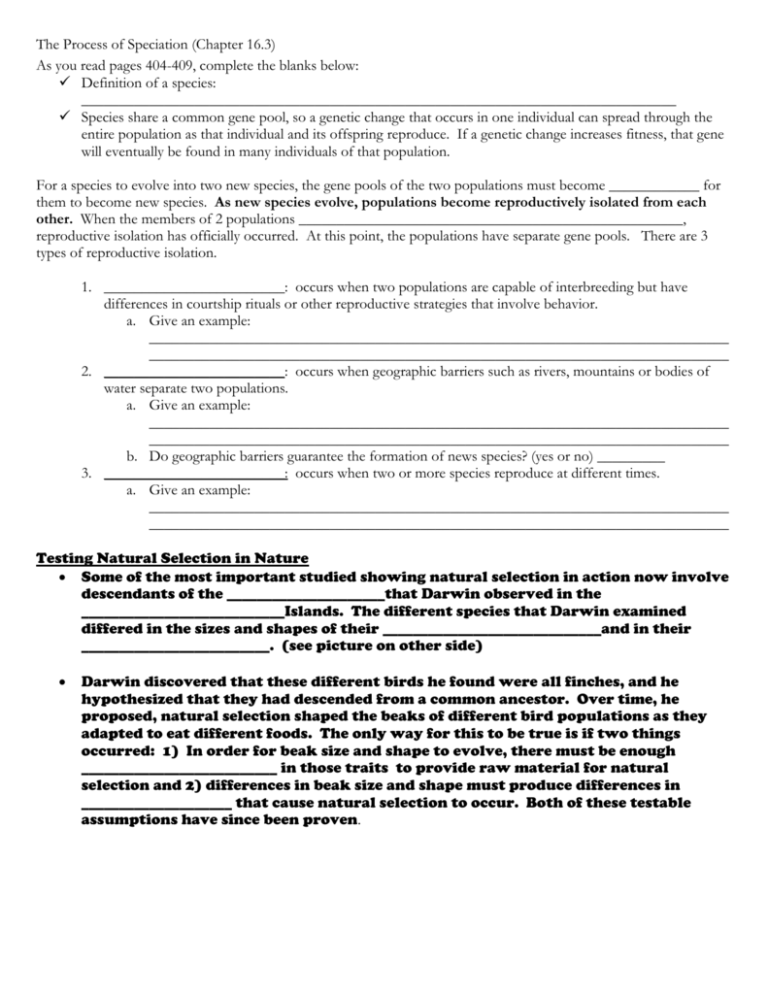
The Process of Speciation (Chapter 16.3) As you read pages 404-409, complete the blanks below: Definition of a species: _______________________________________________________________________________ Species share a common gene pool, so a genetic change that occurs in one individual can spread through the entire population as that individual and its offspring reproduce. If a genetic change increases fitness, that gene will eventually be found in many individuals of that population. For a species to evolve into two new species, the gene pools of the two populations must become ____________ for them to become new species. As new species evolve, populations become reproductively isolated from each other. When the members of 2 populations ___________________________________________________, reproductive isolation has officially occurred. At this point, the populations have separate gene pools. There are 3 types of reproductive isolation. 1. ________________________: occurs when two populations are capable of interbreeding but have differences in courtship rituals or other reproductive strategies that involve behavior. a. Give an example: _____________________________________________________________________________ _____________________________________________________________________________ 2. ________________________: occurs when geographic barriers such as rivers, mountains or bodies of water separate two populations. a. Give an example: _____________________________________________________________________________ _____________________________________________________________________________ b. Do geographic barriers guarantee the formation of news species? (yes or no) _________ 3. ________________________: occurs when two or more species reproduce at different times. a. Give an example: _____________________________________________________________________________ _____________________________________________________________________________ Testing Natural Selection in Nature Some of the most important studied showing natural selection in action now involve descendants of the _____________________that Darwin observed in the ___________________________Islands. The different species that Darwin examined differed in the sizes and shapes of their _____________________________and in their _________________________. (see picture on other side) Darwin discovered that these different birds he found were all finches, and he hypothesized that they had descended from a common ancestor. Over time, he proposed, natural selection shaped the beaks of different bird populations as they adapted to eat different foods. The only way for this to be true is if two things occurred: 1) In order for beak size and shape to evolve, there must be enough __________________________ in those traits to provide raw material for natural selection and 2) differences in beak size and shape must produce differences in ____________________ that cause natural selection to occur. Both of these testable assumptions have since been proven. Speciation in Darwin’s Finches How DID the Galapagos finches evolve from a single group of founding birds from the mainland? o Speciation in the Galapagos finches occurred by founding of a new population, geographic isolation, changes in the new population’s gene pool, reproductive isolation and ecological competition. Here are the steps: 1. ____________________________: A few finches from the South America mainland – species A – flew or were blown onto one on the Galapagos Islands (maybe got lost or blown off course by a storm?). Finches are small birds that do not usually fly far over open water. Once they arrived on one of the islands, they managed to survive and reproduce. 2. ____________________________: Some birds from species A crossed to another island in the Galapagos group. Once they got there, they remained there because they rarely move from island to island. Now they are isolated from each other and no longer share a common gene pool. 3. _____________________________: the two groups adapted to their local environments (different size and shapes of beaks). Species B is formed. 4. ______________________________________: Even if Species B went back to the first island, finches only mate with others with the same type of beak, so reproductive isolation has resulted. The two species live on the same island, but are considered a separate species because of beak size and mating behavior. The gene pools of the two bird populations remain isolated from each other. 5. _______________________________________: They compete with each other for available seeds. During the dry season, individuals that are most different from each other have the highest fitness. The more specialized birds have less competition for certain kinds of seeds and other foods, and the competition among individual finches is also reduced. Over time, species evolve in a way that increases the differences between them. A new species may evolve. 6. __________________________________________: the process of isolation on different islands, genetic change, and reproductive isolation probably repeated itself time and time again across the entire Galapagos Island chain. Over time, it produced the ________different finch species found today.
